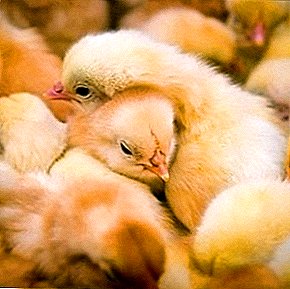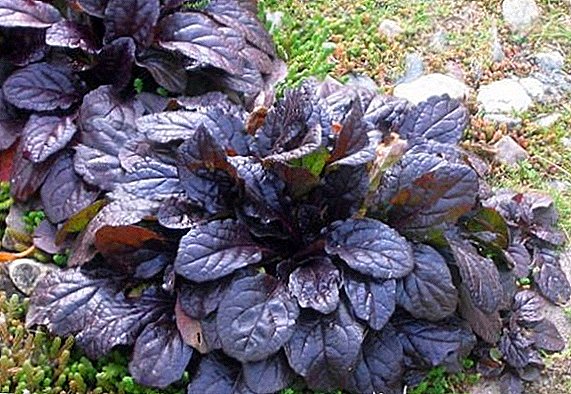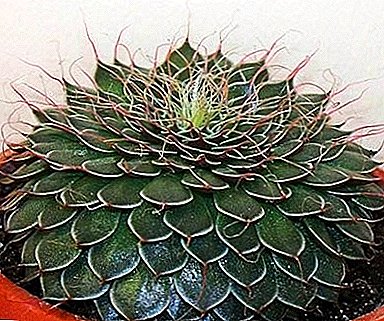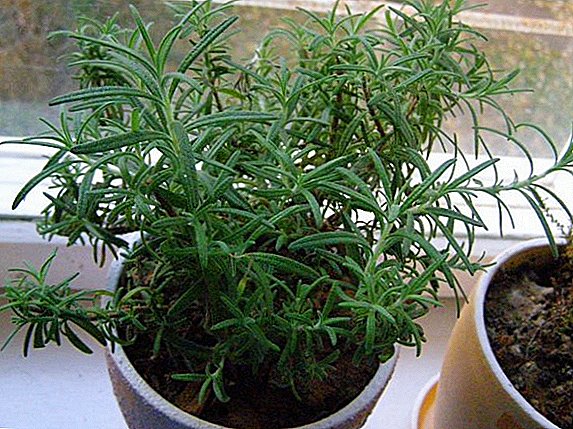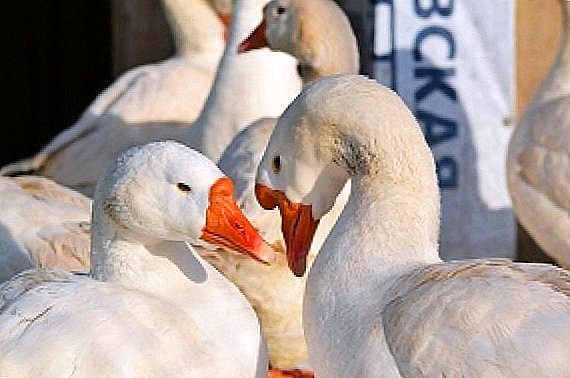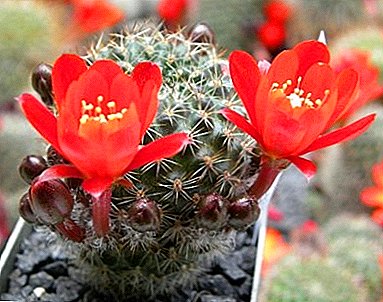
Cacti of the genus "Isleuster" were abolished as a separate genus, and all copies have moved to the genus Rebution.
Nevertheless, the specimens have not lost their amazingness and are completely worthy of an individual description.
general description
The “islesters” are common in Bolivia and on the Argentine northern plateaus. Grow at high altitude, about 3500 m above sea level, like steep slopes, and feel great under the protection of local shrubs. In this area, the climate is rather harsh, and the surface layer of the soil is alluvial.
Morphologically, the “Islesters” are very similar to the “Rebuses”. The stem has a spherical or cylindrical shape, necessarily ribbed, diameter from 3 to 6 cm. Usually they form a lot of babies. The number of edges can vary from 11 to 25 pieces, their arrangement is often spiral, and there are always small tubercles between them.
Areola light color and on it are whitish spines. Their length reaches a maximum of 0.7 cm. The central thorn is strong, it may be yellowish, with a dark tip. In a bundle of them from 1 to 5 pieces, Dina - from 0.2 cm to 2 cm.
Views from the photo
Belotsvetkovaya - originally from Bolivia. It has a spherical and highly branching stem, diameter up to 3 cm. Radial spines, 15-20 pieces together. Central only 5, they are transparent and hair-like. It blooms from the middle to the end of spring, the buds are small in size, white, but they are also pinkish, located on a long tube. Reach 2.5 cm and are able to completely cover the bush.
On the photo "Ayloster Belotsvetkovaya":

Deminuta - hails from Northern Argentina. Stems reach 6 cm in height and the same in diameter. The plant itself is dark green in color, 7–12 pieces of light spines, up to 0.7 cm in length. Blooms red-orange, inflorescence size - 3-3 cm.
On the photo "Ailoster deminuta":

Fibriga - originally from Bolivia. Differs spherical or slightly elongated stems, shiny, green-blue, up to 6 cm in size. Spines are radial, white, central - brownish. In a bundle up to 40 pieces, their length is 1 cm. The central needles are only 4 pieces, and they are 2 cm long. The flowers are medium-sized, red-orange, while the tube itself is red-purple and covered with small setae. Abundant bloom is noted in the middle of summer.
On the photo "Ailoster Fibrig":

Helios - spectacular representative that blooms at the age of three years. The buds are located on long tubes and reach 6 cm. Their shade is bright orange, the bloom is very abundant, and several buds are revealed at once. In most cases, the bush itself is simply not visible under the flower carpet.
On the photo of "Ailoster Helios":

Kupper - globular, dark green color. Between the ribs there are low tubercles. 15-20 spines in the beam, thin, 2 cm each. Central brown hue, only the tip on the radial ones darker. Flower red-orange with green throat. Blossoming: May-July.
On the photo of "Ailoster Kupper":

Muscle - a small specimen with bright spines, which, as it grows, forms entire plantations from its own processes. The flowers are bright, beautifully contrasted with a white cover of needles.
On the photo of "Ailoster Muscle":

Pseudoinut - long stalks of green color, in a bunch of 10 thorns, they are white and vitreous, up to 7 mm. Central only 3, they are yellowish or brown, up to 13mm. The flower is medium in size, maroon-red.
On the photo of "Ptvominota Ailoster":

Pseudominal - cylindrical, 5 cm high and 3 cm wide, dark green. Needles are radial, up to 15 pieces: yellowish or pink, old needles fade, 5 mm in length. Central thorn one. Bud small, purple hue.
On the photo of “Ayloster Psevdomuskula”:

Spegasziniana - Spherical cactus, 6 cm in height, 4 cm in diameter. Differs in a light green color, large bunches of radially located bright spines. Central needles may not be at all. The flower is large, red shade.
On the photo of Ailoster Spegazziniana:

False Tiny - stems are cylindrical, combines up to 15 radial needles, which with age change color from yellow to whitish. Bud medium size, orange.
On the photo "Islauster False-Tiny":

Hoffman - not very common form, has orange flowers and needles of a light shade, which cover the stem very tightly. The flower is very bright, with narrow petals and looks very much like a daisy.
On the photo of "Ailoster Hoffman":

Home care
"Ayloster" blooms from an early age, with appropriate care - in the spring, flowers of simple form. Each type of buds have a different shade, they are bright orange, white, pink and dark red. It can be said that they are funnel-shaped and wide-open, most often located in the middle of the stem or closer to its base.
Pistils are almost always intergrown with the floral tube. The main sign of "Islester" - on the tube and ovary there are always microscopic bristles. In rebuses, these parts are distinguished by their absolute smoothness.
Interesting! After flowering, spherical fruits appear, having a green or pink-gray shade and reaching 7 mm.Inside, they are filled with small black seeds.
Actions after purchase
 When changing the conditions of maintenance, necessarily occurring after the purchase, “Ayloster” do not experience stress and feel perfectly in a new place.
When changing the conditions of maintenance, necessarily occurring after the purchase, “Ayloster” do not experience stress and feel perfectly in a new place.
In the apartment, their cultivation does not give flower growers difficulties.
Recommendations for the care of the "Ailostera" can be attributed to the general, they are not more demanding than other types.
Until that time, until the buds appear - they water moderately, then the amount of water is increased, and the specimen is rearranged to the illuminated window sill.
Naturally, it must be hidden from the scorching rays of the sun. In the summer, "Ailosteru" is often taken out into the street, but it does not forget about sufficient watering.
Since they grow in the natural environment in the mountains, they are accustomed to daily temperature fluctuations. If the care is correct, then "Ister" can re-bloom in mid-autumn.
Light-loving and temperature content
Lighting should be bright. If it is overcast in the winter outside the window, then it is necessary to accustom to additional highlighting of “Ailoster” gradually.
Comfortable temperature required for successful growth: summer + 22-35 ° C, autumn and winter + 7-10 ° C. The cactus does not need spraying or additional humidification of the surrounding air.
Watering and fertilizer
In autumn, the intensity of watering is gradually reduced, to give the plant the opportunity to fully prepare for wintering. In the rest period, "Ister" should be in a bright and cool place with a maximum temperature of 10C. Until the spring, the cactus winters completely without watering.
Very rarely, you can water the very young "Islesters", but you still need to pay attention to the surrounding conditions. If wintering will take place in a warm apartment, the rest period will be shortened and with insufficient light at the bottom, the stems will thin and stretch. After there will be an active formation of lateral shoots, but the flowering will be very weak.
Once a month, you can feed the "Ailoster" conventional fertilizer for cacti. In the rest period do without feeding.
Transplantation and reproduction
During the spring transplant, loose and moisture-permeable earth is chosen. It should be composed of several parts of fertile and lightly soil, one part of gravel aggregate and two parts of calcined sand.
Drainage is laid down on the bottom, expanded clay or large river stones will fit, and the prepared mix is poured from above.
 The easiest way to propagate the "Ailoster" with the help of lateral processes and seeds.
The easiest way to propagate the "Ailoster" with the help of lateral processes and seeds.
The shoots take root in the sand.
They can be watered only after the appearance of the first roots.
To propagate by seed, certain skills and experience are needed.
They are sown on the surface of the earth mixture, create greenhouse conditions for germination and a temperature of 20 ° C. It is necessary to follow all the recommendations and requirements that are attached to the package with seed material. Seeds germinate quite a short time, so they can not be stored for a long time.
Diseases and pests
On the stems may appear foci of rotting, covered with mold. They occur as a result of improper watering at extremely low temperatures. In addition, the plant can be affected by powdery mildew. Based on the type of fungus that struck “Ailoster”, the following fungicides can be used for the treatment: Tiuram, Vitavax and Mancozeb.
Important! "Ailoster" can be attacked by mealybugs, spider mites and scutes.
This means that the newly acquired plant must be kept in quarantine for at least two weeks. To get rid of pests are perfectly suitable such insecticides: "Nero", "Keltan" and "Aktelik".
In addition to those species "Ayloster" that are already known to botanists, there are many interspecific hybrids bred by breeders. In some cases, new species are obtained by pereovleniya, if the grower has a large collection of plants. Cacti are very unpretentious, they take up little space, but they are able to decorate any room with them, especially during the flowering period.



